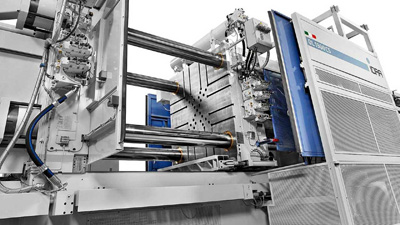In a recent technical briefing session, Toyota announced a raft of new technologies as it catches up to other carmakers in EV expansion plans. One of them is giga casting, wherein select car body parts are constructed from two or three main components, simplifying the manufacturing process and reducing costs.
Tesla was the first to widely use the giga press, and multiple carmakers have attempted to emulate the approach. Geely uses the technique for the Zeekr 009 MPV and General Motors is reportedly using it for its upcoming flagship EV, the Cadillac Celestiq. Volvo and Hyundai have similar plans as well.
A giga press is a high-pressure die-casting machine that injects molten aluminum into casting molds. Tesla is believed to have first used it on the Model Y, reportedly replacing assemblies consisting of 70 parts with just two to three huge castings.
The house-sized machines have a clamping force of 5,600 to 6,200 tons of force, although it may vary depending on configuration and make, as Tesla appears to be diversifying its giga press suppliers, and not rely solely on Italy’s IDRA. Switzerland’s Bühler and China’s LK Group are other big players in the space.
Giga casting benefits are multifold. The technology allowed Tesla to reduce the Model Y's rear underbody manufacturing costs by 40%, per some experts. For the Model 3, Tesla removed 600 robots from the assembly, as the giga press simplified production, reported Autoblog. Meanwhile, Toyota has said the technology will reduce processes and plant investment by half.
Another reason for the wider adoption of technology is the potential weight savings. EV batteries are heavy, and manufacturers look to compensate for the additional weight elsewhere. Giga press presumably reduces carbon emissions as well by eliminating dozens of individual parts.
However, there are a few pitfalls to the technology. In the case of collision repair, replacing huge parts could cost a lot more than replacing smaller components. Even though body manufacturing is highly automated nowadays, the practice can also impact businesses supplying smaller components, according to Automotive News Europe.










Abby Andrews